For the majority of possession-based sides, getting players to receive the ball between the opponent’s midfield and defensive lines is key to progressing the ball into the final third as well as chance creation. Examples of teams that focus on this idea are Erik ten Hag’s Ajax and Pep Guardiola’s Manchester City. This tactical analysis will look to explore the ways in which teams are able to achieve this, and why this concept is a useful tool to progress the ball and create chances.
The space between the midfield and defensive lines
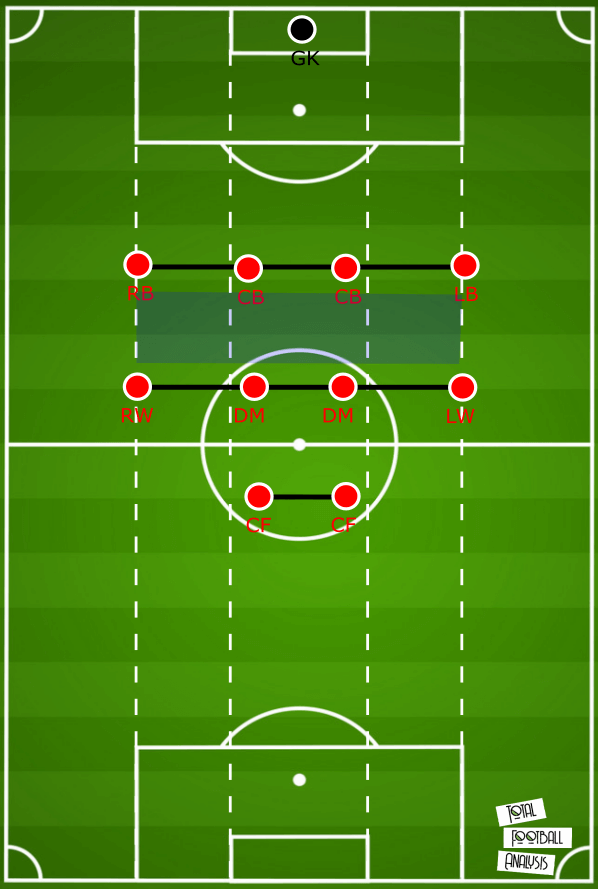
When set up in a mid or low-block, teams tend to defend in a structure composed of lines of players to be as compact and organised as possible. Therefore, between these lines of the structure is typically where the majority of the space is available to receive in. However, players positioned in these lines will look to cover passing lanes to these areas as best as they can to prevent opposing teams from accessing these areas where attackers can receive closer to the goal. The above graphic exhibits the space available for players to receive between the midfield and defensive lines of a basic 4-4-2 set-up.
Now that we have defined the space, we need to discuss how this space can be accessed. Passes threaded through to these areas from deeper positions will need to go through the gaps between the players in the midfield line. Where these gaps mainly depend on the number of players in the midfield line.
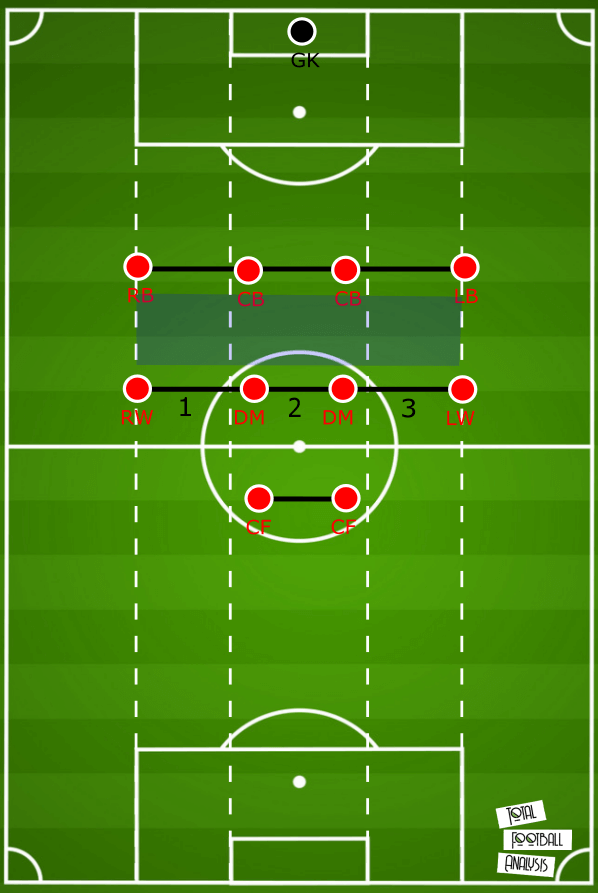
For any structure with a flat line of four midfielders, such as a 4-4-2 or a 4-4-1-1, there are three gaps between the midfielders, as demonstrated above. However, the size of these gaps is unlikely to be equal. The middle gap between the two midfielders is likely to be the narrowest as the centre is the highest priority area to provide cover for as this zone is closest to the goal. This means that the two central midfielders will normally stay relatively close together in order to protect the centre of the pitch. However, the narrower the two central midfielders are, the more the gaps either side of them in the inside channel open up.
So, why can’t the wide players simply shift inside to cover this space? This is where the importance of maintaining width comes into consideration. If there is no player on the outside of either wide midfielder, then they are able to come inside and cut off passing lane through the inside channel. However, if there is a player in each wide space, both of the opposition’s wide midfielders can’t drift inside significantly, as doing so would compromise wide cover and allow for easy progression down either flank. What we can gather from this is that the best areas to enter the space between the lines is through the gaps in either inside channel.
Now that we have established the most effective areas to play through, we need to determine how the players between the lines should be positioned. To decrease the chance of the vertical pass being intercepted, the ball should travel as far as possible from either of the two players it is travelling past. However, once the player has received the ball, they want as much time as possible to turn to face forwards to progress the ball further. Therefore, they should also be positioned as far away as possible from the players around them.
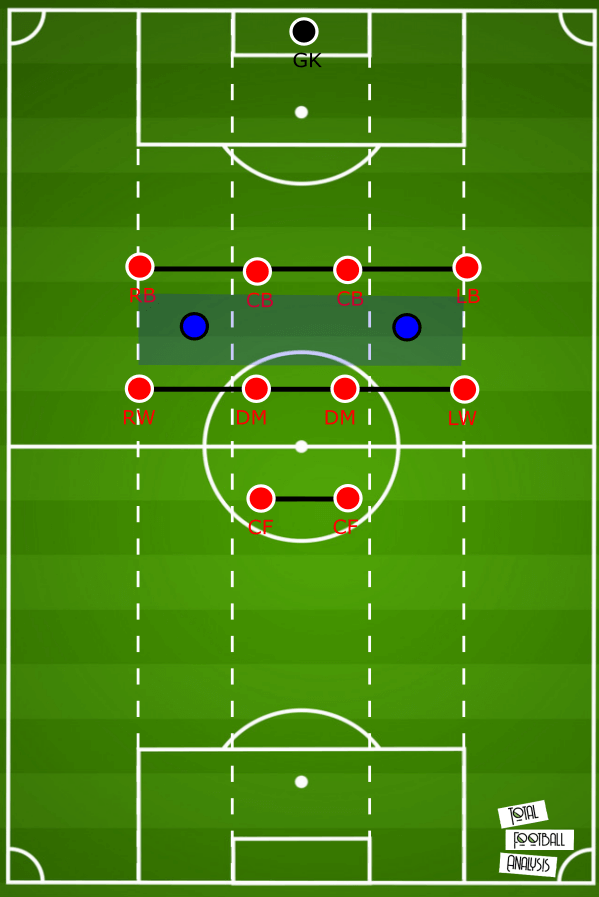
The graphic above displays the ideal positioning of the two players positioned in the inside channels. They have maximised their distance from the nearest opposition player and are also positioned in between the two midfield players on their side to decrease the chances of a vertical pass to them from being intercepted.
In addition, there should ideally be a player in the central space to prevent the opposition’s central midfielders from being able to leave their central positions and help cover the inside channels.
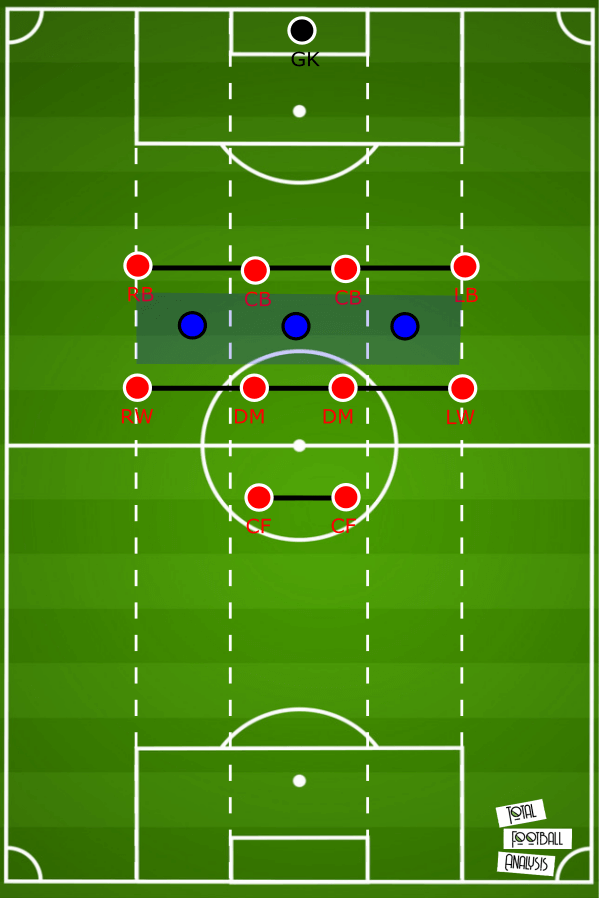
As a result, we end up with three players positioned between the lines as shown above.
Which positions look to receive between the lines?
These three players between the lines can be a variety of roles of players. Let’s take a look at some examples of teams that have players positioned in this manner and what types of players they prefer to play in these positions.
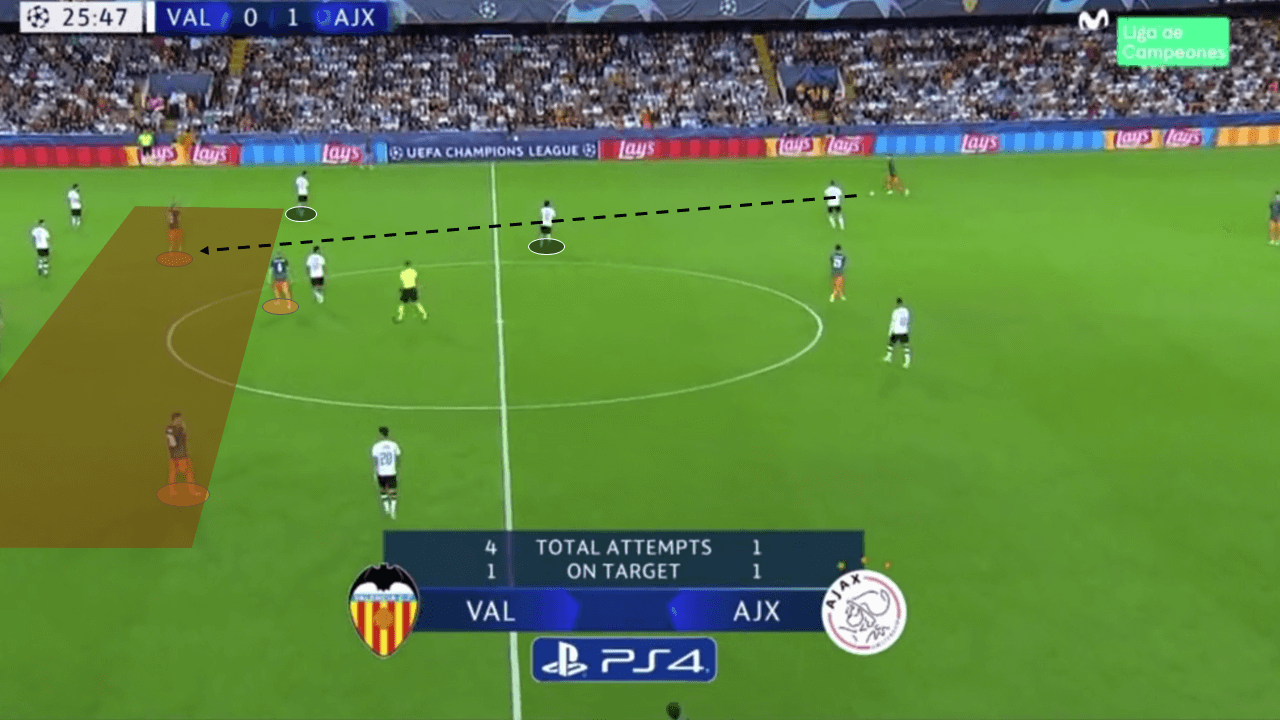
For our first example, we have Erik ten Hag’s Ajax side. Ten Hag likes to play in a 4-2-3-1 offensive set-up. Here, the three attackers behind the centre forward, the attacking midfielder and two wide forwards, will all look to receive between the lines in narrower positions rather than staying out wide, as shown in the above image. Instead, the fullbacks provide the width with their high positioning. This allows for at least three options to play forwards to in between the lines at all times, as discussed earlier.
Furthermore, the above image is an example of how the gap between the wide midfielder and one of the central midfielders can be vulnerable to being played through. The wide forward takes up a good position behind and between the two midfielders and so is able to receive between the lines.
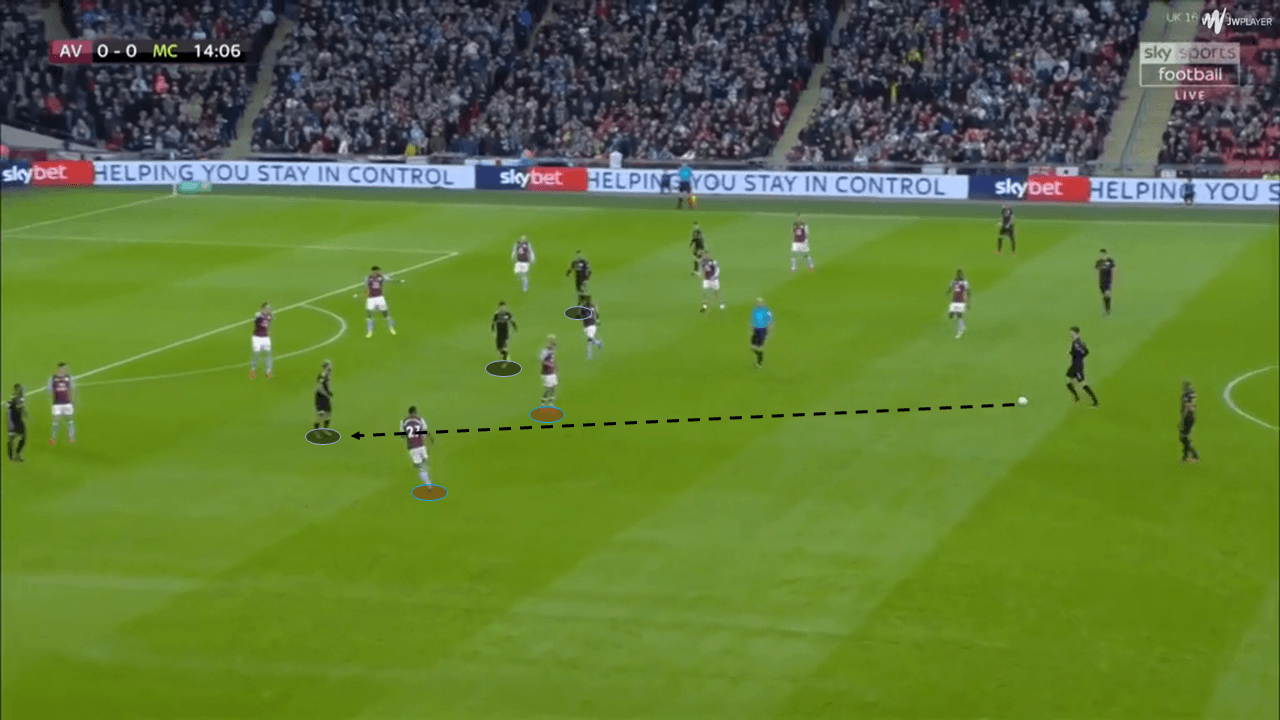
Our second example is of Pep Guardiola’s Manchester City. Although they adopt very similar positioning of three players between the lines, they prefer these three players to be their striker as well as their two advanced midfielders. This enables their wingers to keep the width and their fullbacks to invert and sit deeper to recycle possession, as well as protecting against the counter. The advantage of City’s positioning method is that they have an additional player in front of the midfield line to thread passes into the players between the lines. This additional player means that they have a greater variety of passing angles into players behind the midfield line compared to Ajax. However, the advantage that Ajax have is that they are able to have a striker pinning the opposition’s centre-backs, preventing them from closing down the players between the lines as soon as they receive.
Pinning the central midfielders
There may often be times when a team doesn’t have a central option between the lines, rather just a striker placed between the two centre-backs. When this occurs, as discussed, the central midfielders will have greater freedom to leave their position covering the centre, and instead block off passes into the inside channel. To prevent them from being able to move wider, a technique known as pinning can be used.
If you are not already familiar with the term, pinning is the act of purposefully positioning a player in close proximity to a player to prevent them from leaving their position in the structure. By placing a player close to them, they are forced to stay otherwise risk opening up a passing lane to the player they just left open in space. This can, therefore, be utilised to open up the passing lanes to the inside channels even when there is no central option between the lines for the opposition’s central midfielders to cover.
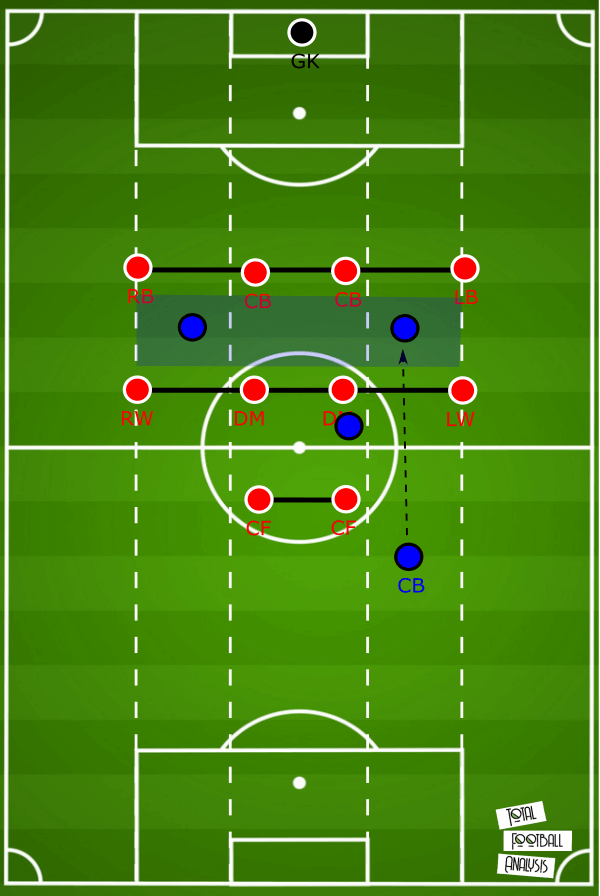
Here, the ball-near central midfielder is pinned by our central midfielder and therefore cannot shift across into the inside channel and risk leaving our player free in the centre.
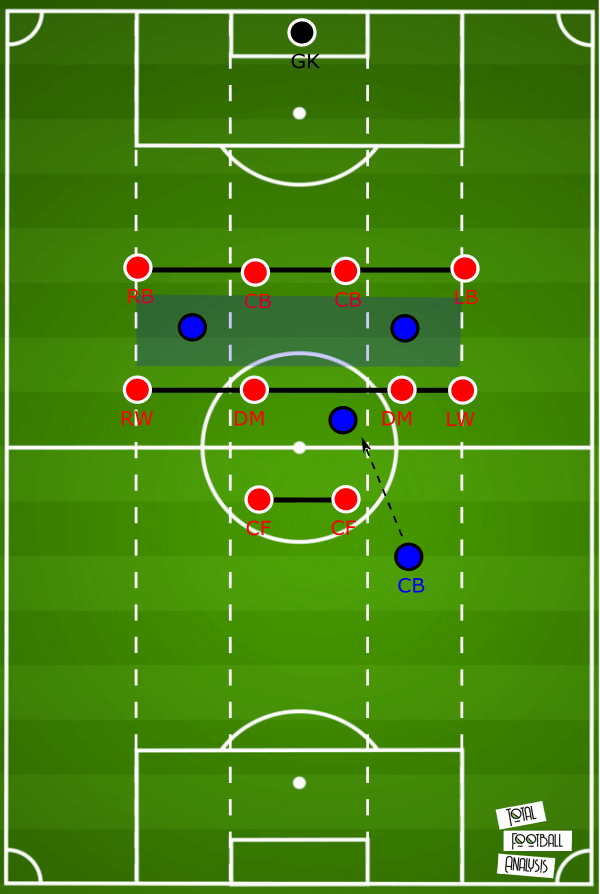
This would be the result if the ball-near midfielder stepped across to cover. The centre of the pitch would be vacated, providing the opportunity for our midfielder to receive on the half-turn and play forwards. Whichever option the opposition midfielder chooses, ball progression has been achieved.
Positioning of the player making the vertical pass
An additional aspect that must be considered is where the player who is playing the pass to the players in between the lines is positioned.
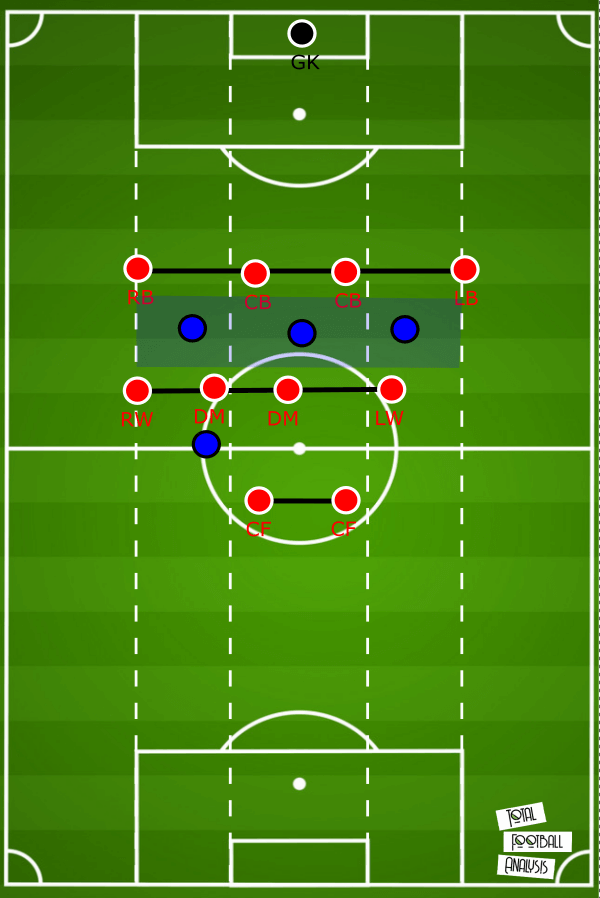
The graphic above displays an example of inefficient positioning from the player in front of the midfield line. The player has two options: they can realistically play to ahead of them. However, by positioning themselves horizontally closer to one than the other, it increases the passing angle to the player they have moved further from; in this case, the central player between the lines. Increasing the passing angle to this extent increases the chances of interception. Instead, if they were to position themselves horizontally between the two options, they could have good access to both players and decreases the chance of interception. This is demonstrated below.
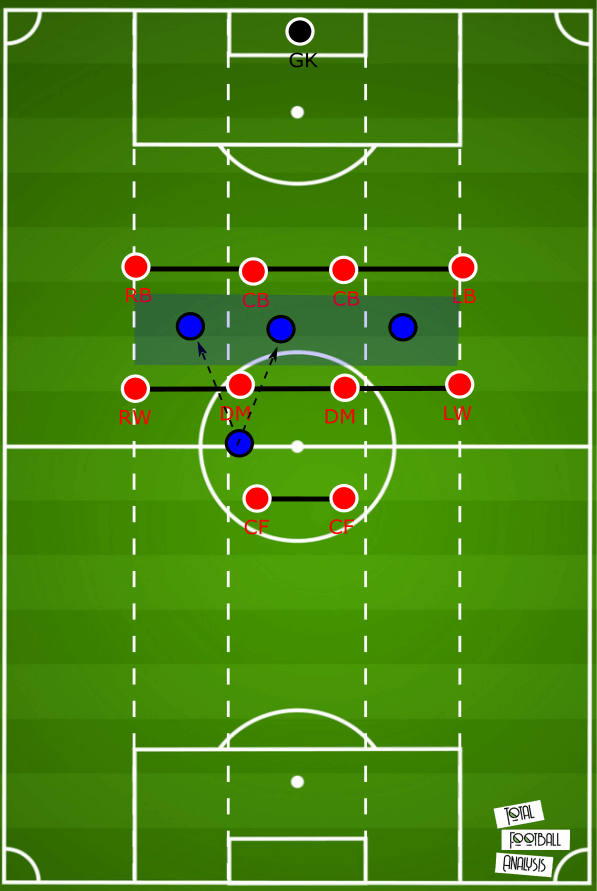
Furthermore, the more central positioning increases access to the far side of the pitch, preventing the opposition’s midfield line from shifting across.
Playing between the lines
Now that we have discussed how to create passing lanes to players between the lines, we should talk about some ways in which the players receiving in these areas can create goalscoring chances.
The first factor we have to consider is whether the opposition defence is stepping up to press anyone receiving behind the midfield line, or if they are pressure from the opposition’s midfield dropping. If they do so, it is very unlikely that the player in possession will be able to turn and run at the defence since they will be pressured. Instead, they should look to play a lay-off pass to a teammate also positioned behind the midfield line who will then be able to receive facing forwards.
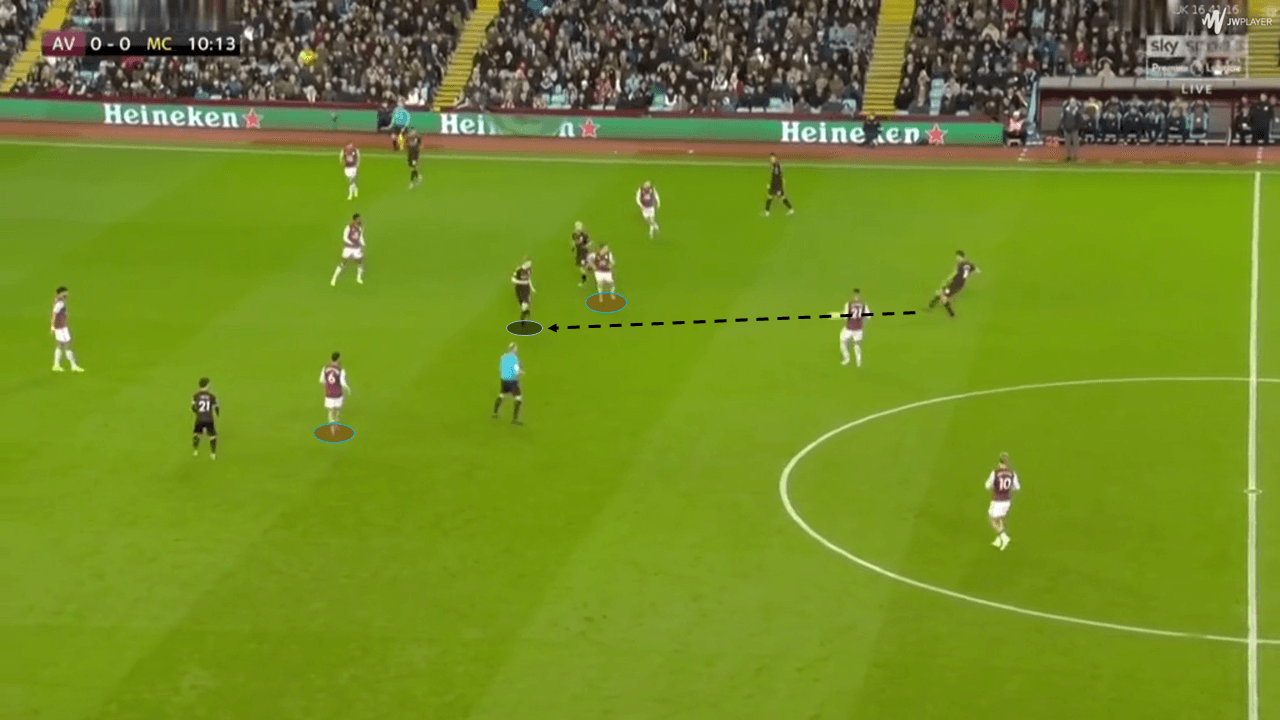
Here, Kevin De Bruyne receives a pass between the lines. However, due to his positioning being too close to the opposition’s midfield line, he is immediately pressured by an opponent.
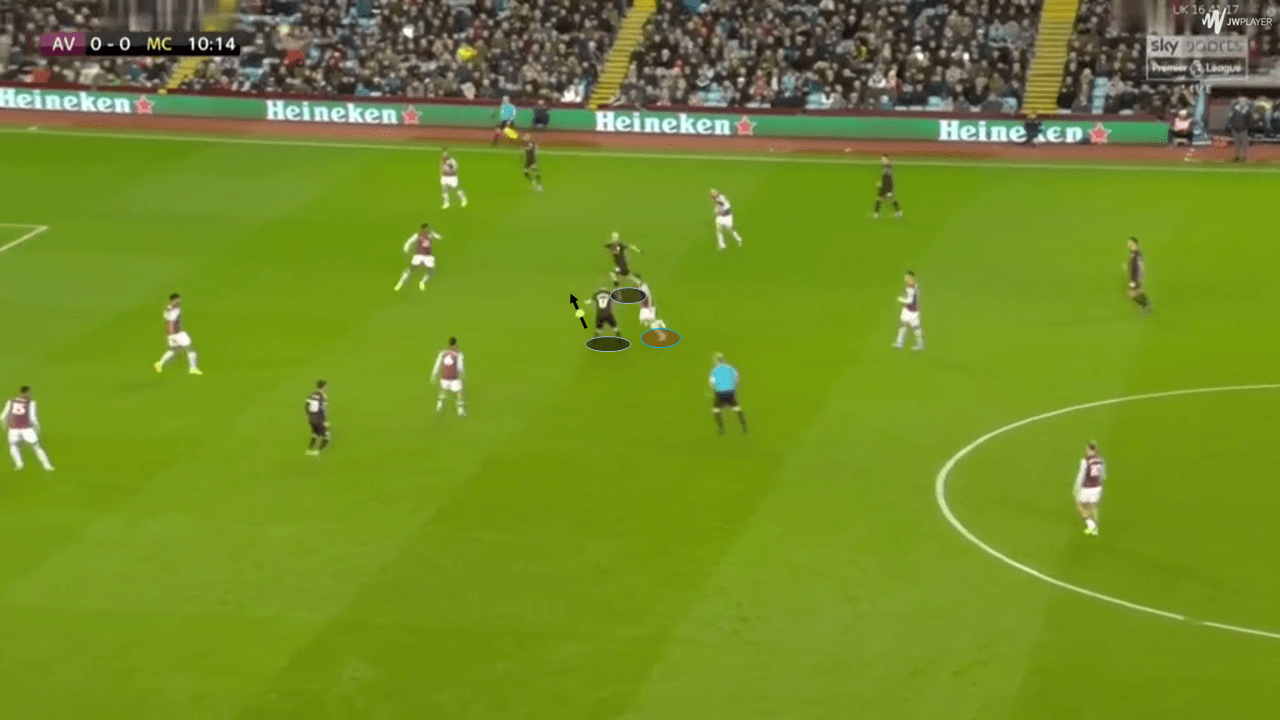
Because of this, he decides to play a lay-off pass to Aguero between the lines, who is able to face forwards and pass to a teammate running beyond Aston Villa’s backline.
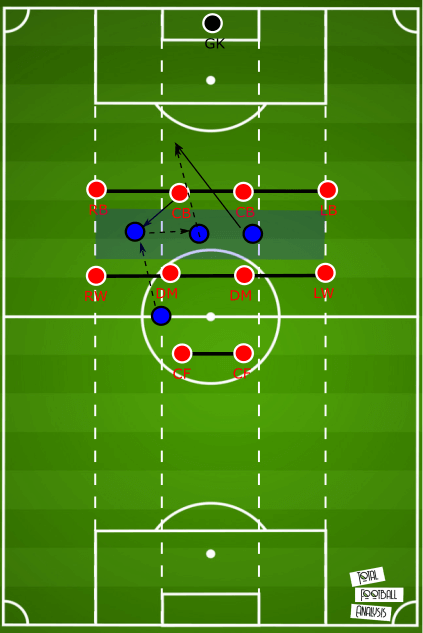
The pattern of this movement, shown above, is one player offering lateral support to the player being pressed, while one runs into depth to receive a pass in-behind the opponent’s backline, preferably into the space vacated by an opposition defender if they decide to step up. This type of passing combination is commonly known as an “up-back-through” combination.
Finally, if the player is able to receive between the lines under no pressure, they should look to receive the ball on the half-turn in order to drive at the opposition defence. Meanwhile, players supporting the attack should aim to run in-behind the opposition to receive a pass which would give them a goalscoring opportunity.
Conclusion
To conclude this piece of tactical theory, we have discussed the most efficient areas and passing lanes available to play to players positioned between the lines, as well as exploring the optimal places to be positioned in relative to the opposition players in order to receive between the lines. We then finally took a look at some examples of some passing combinations to create goalscoring chances depending on how the opposition reacted to a player receiving behind their midfield line.






Comments